Lucerne, Switzerland has produced 8 excellent fact sheets about 30km/h (18.5mph). They describe how 30km/h affects quality of life (better), noise (less), road safety (increased), air quality (improved), travel time (little difference), bus journey times (rarely any difference), road capacity (helps) and neighbourhoods (nicer).
Written in German, they can be downloaded, or the summaries translate well in English via Google Translate
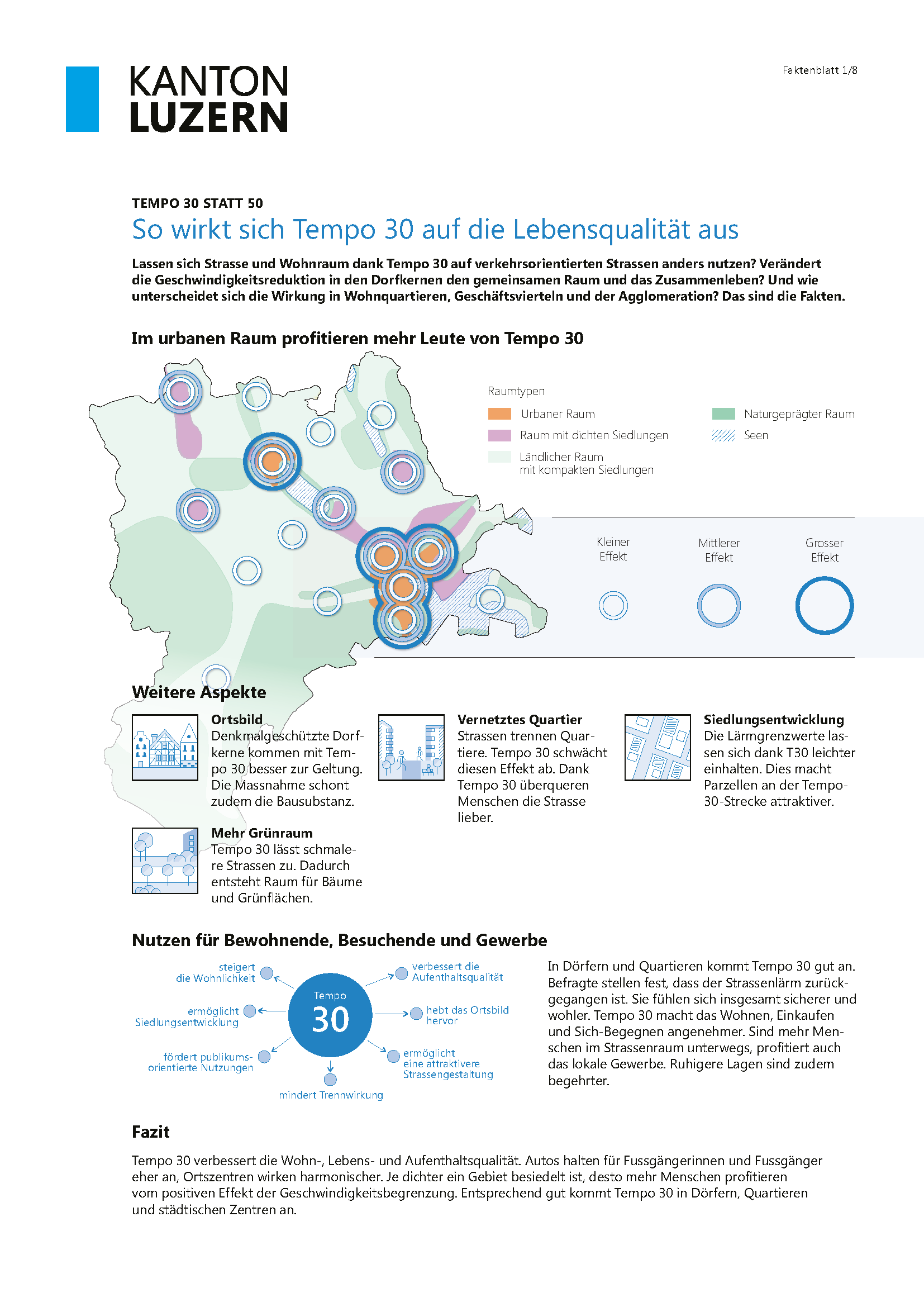 |
This is how speed 30 affects the quality of lifeCan roads and living space be used differently thanks to the 30 km/h speed limit on traffic-oriented streets? Does the reduction in speed in the village centers change the common space and coexistence? And how does the effect differ in residential areas, business districts and the agglomeration? Tempo 30 improves the quality of living, life and quality of stay. Cars are more likely to stop for pedestrians, and town centers appear more harmonious. The more densely populated an area is, the more people benefit from the positive effect of the speed limit. The speed limit of 30 km/h is correspondingly well received in villages, neighborhoods and urban centers. |
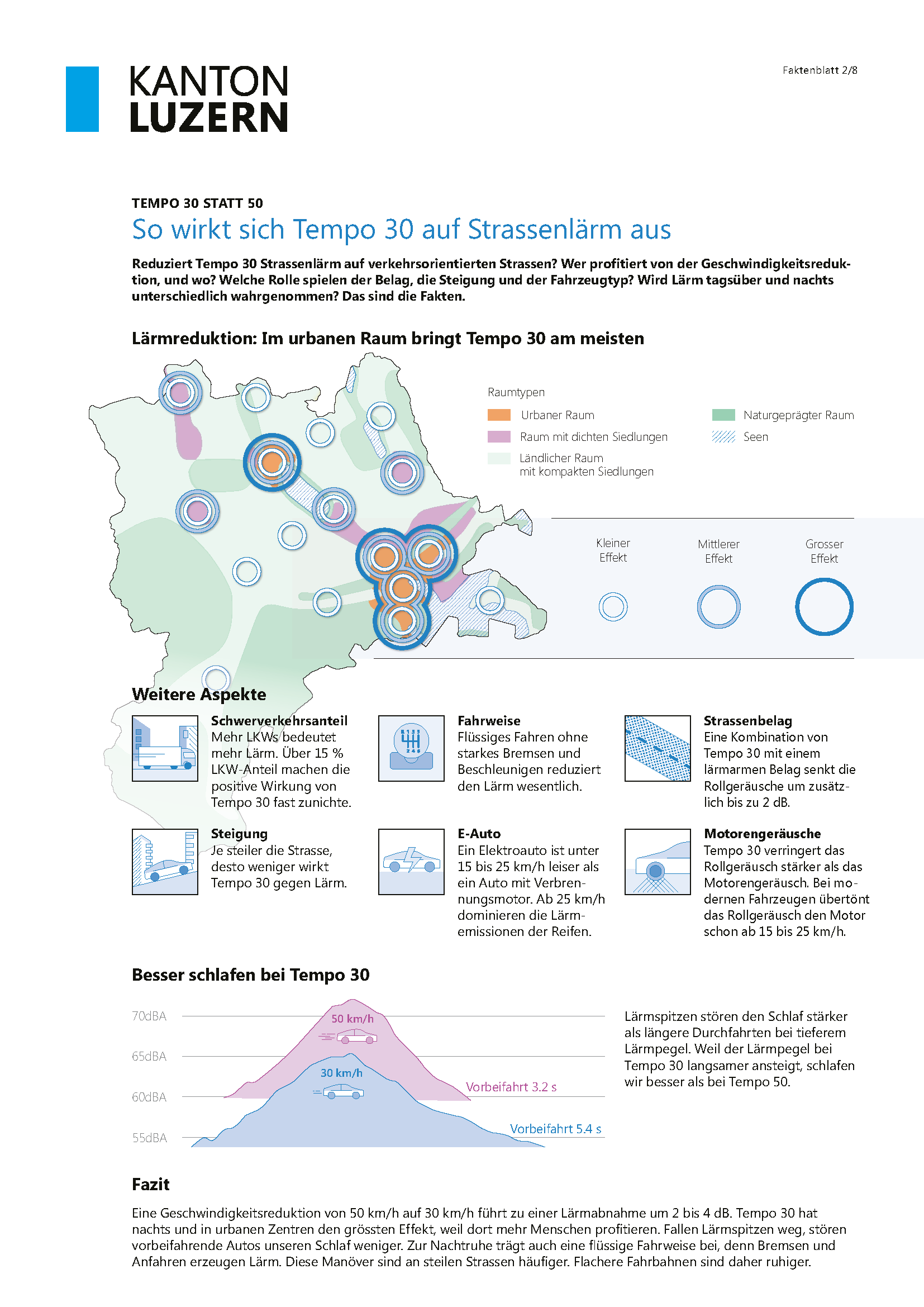 |
This is how speed 30 affects road noiseDoes 30 km/h reduce road traffic noise on traffic-oriented streets? Who benefits from the speed reduction and where? What role do the surface, the gradient and the type of vehicle play? Is noise perceived differently during the day and at night? A speed reduction from 50 km/h to 30 km/h leads to a noise reduction of 2 to 4 dB. Speeding 30 km/h has the greatest effect at night and in urban centers because more people benefit there. If noise peaks are eliminated, passing cars disturb our sleep less. A smooth driving style also contributes to a good night's sleep, as braking and starting generate noise. These maneuvers are more common on steep roads. Flatter roads are therefore quieter. |
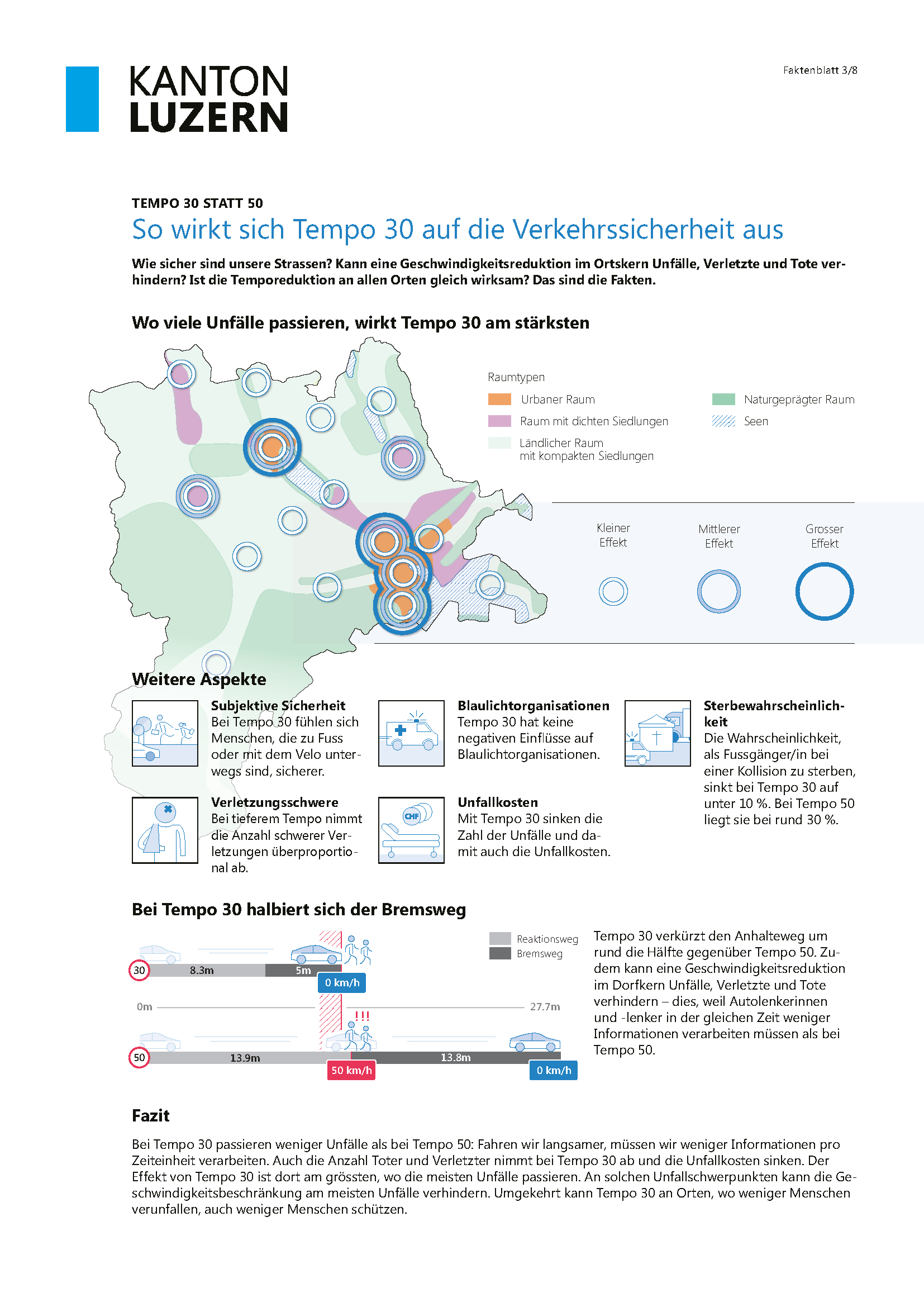 |
This is how speed 30 affects road safetyHow safe are our streets? Can reducing the speed in the town center prevent accidents, injuries and deaths? Is the speed reduction equally effective at all locations? Fewer accidents happen at 30 km/h than at 50 km/h: if we drive slower, we have to process less information per unit of time. The number of deaths and injuries also decreases at 30 km/h and the accident costs decrease. The effect of 30 km/h speed is greatest where most accidents occur. Speed limits can prevent the most accidents in such accident hotspots. Conversely, speed limits of 30 km/h can also protect fewer people in places where fewer people have accidents. |
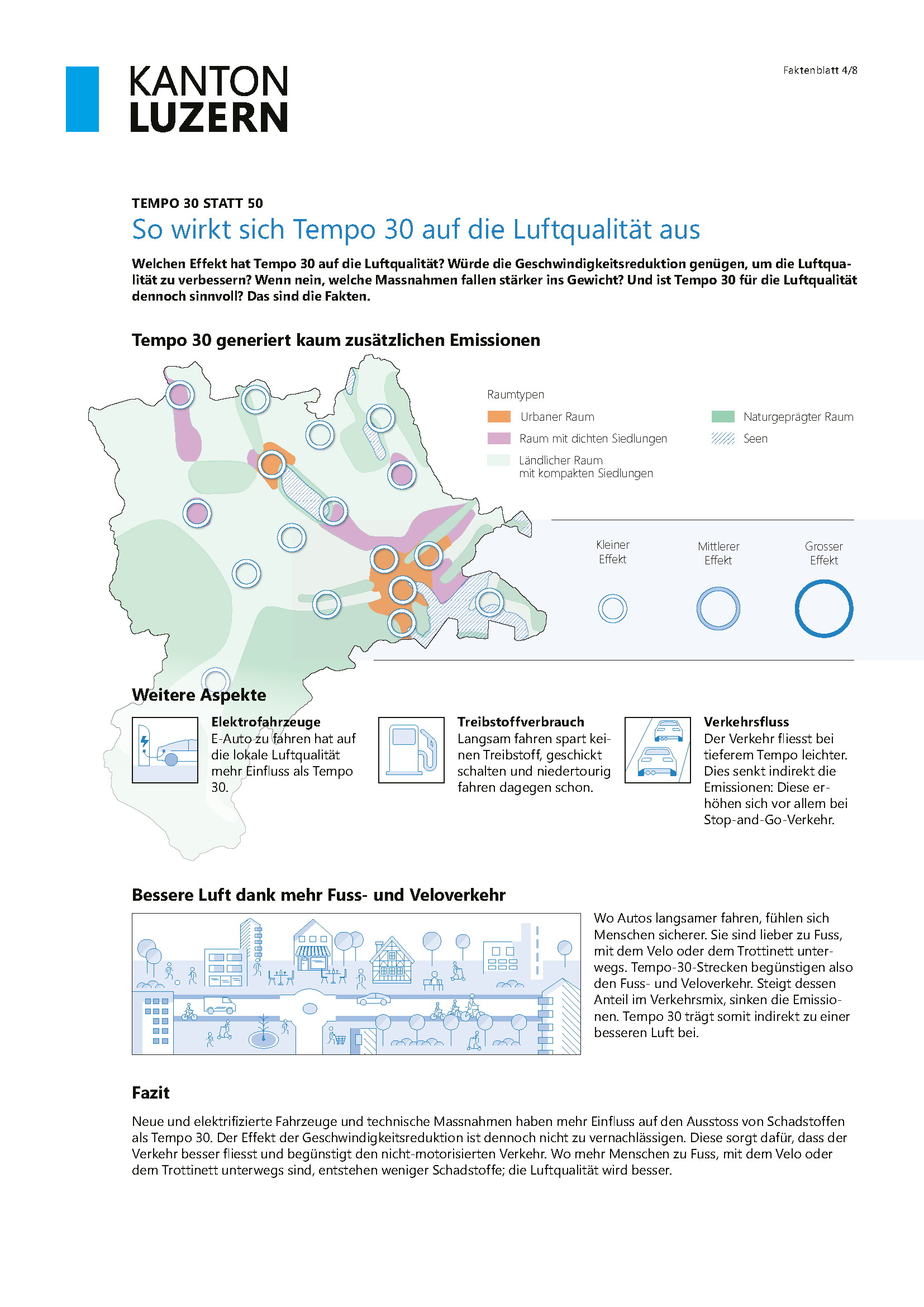 |
This is how speed 30 affects air qualityWhat effect does 30 km/h have on air quality? Would reducing speed be enough to improve air quality? If not, which measures are more important? And does 30 km/h still make sense for air quality? New and electrified vehicles and technical measures have more influence on pollutant emissions than a speed limit of 30 km/h. However, the effect of reducing the speed cannot be neglected. This ensures that traffic flows better and favors non-motorized traffic. Where more people travel on foot, by bike or scooter, fewer pollutants are produced; the air quality is getting better. |
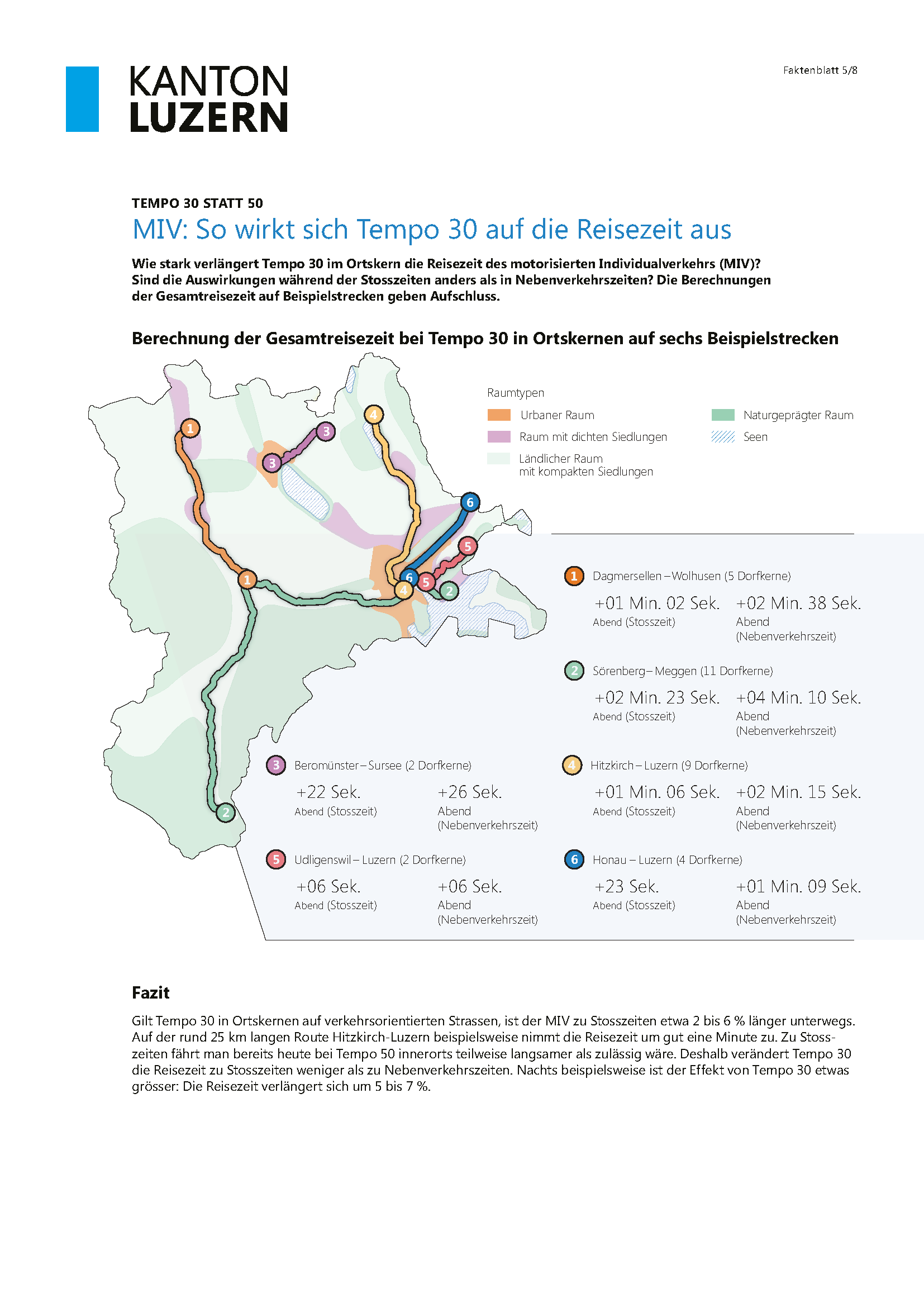 |
MIV: This is how speed 30 affects travel timeHow much does 30 km/h in the town center increase the travel time for private motorized transport (MIV)? Are the impacts different during peak hours compared to off-peak times? The calculations of the total travel time on example routes provide information. If the speed limit is 30 in town centers on traffic-oriented streets, the private motor vehicle travels around 2 to 6% longer at peak times. On the Hitzkirch-Luzern route, which is around 25 km long, for example, the travel time increases by a good minute. At rush hour, people already drive slower than permitted in urban areas at 50 km/h. Therefore, 30 km/h changes travel time less during peak times than during off-peak times. At night, for example, the effect of 30 km/h is slightly greater: travel time increases by 5 to 7%.
|
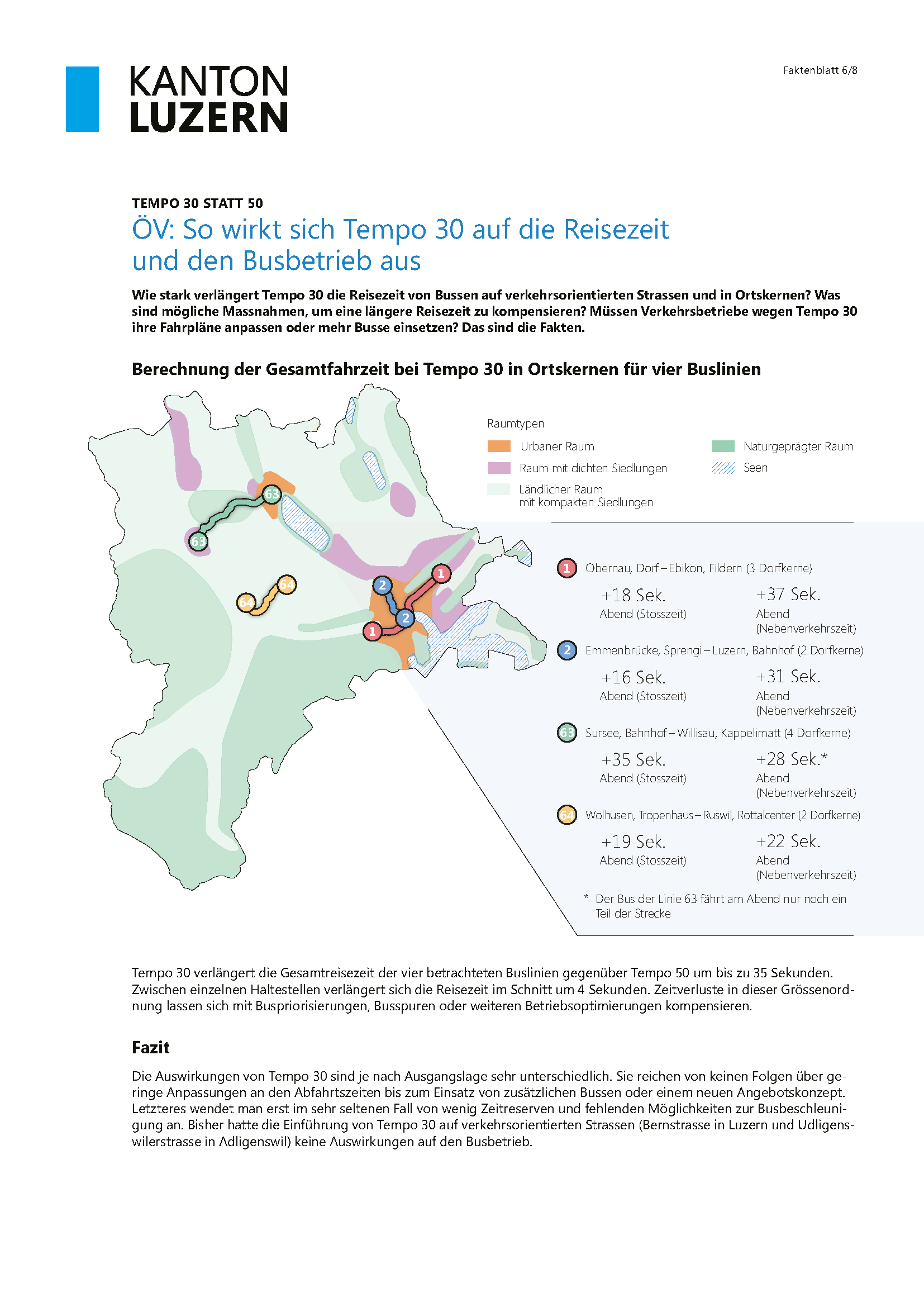 |
Public transport: This is how speed 30 affects travel time and bus operationsHow much does 30 km/h increase the travel time of buses on traffic-oriented streets and in town centers? What are possible measures to compensate for longer travel time? Do transport companies have to adjust their timetables or use more buses because of the 30 km/h speed limit? The effects of 30 km/h vary greatly depending on the initial situation. They range from no consequences to minor adjustments to departure times to the use of additional buses or a new service concept. The latter is only used in the very rare case of little time reserves and no options for accelerating the bus. So far, the introduction of 30 km/h on traffic-oriented roads (Bernstrasse in Lucerne and Udligenswilerstrasse in Adligenswil) has had no impact on bus operations.
|
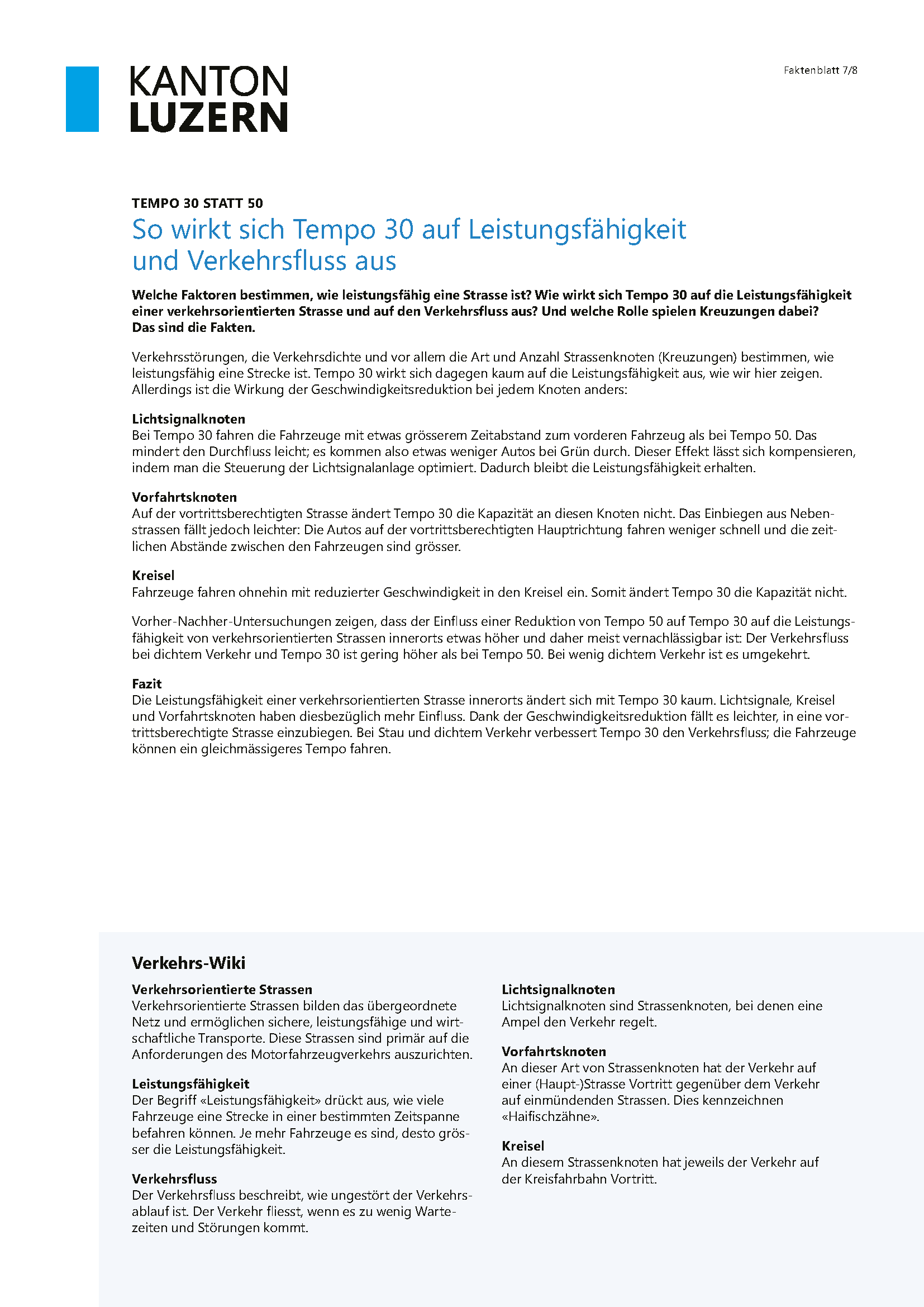 |
This is how speed 30 affects performance and traffic flowWhat factors determine how efficient a road is? How does 30 km/h affect the performance of a traffic-oriented road and the flow of traffic? And what role do intersections play in this? These are the facts. Traffic disruptions, traffic density and, above all, the type and number of road junctions (intersections) determine how efficient a route is. 30 km/h, on the other hand, has little effect on performance, as we show here. However, the effect of speed reduction is different for each knot.
|
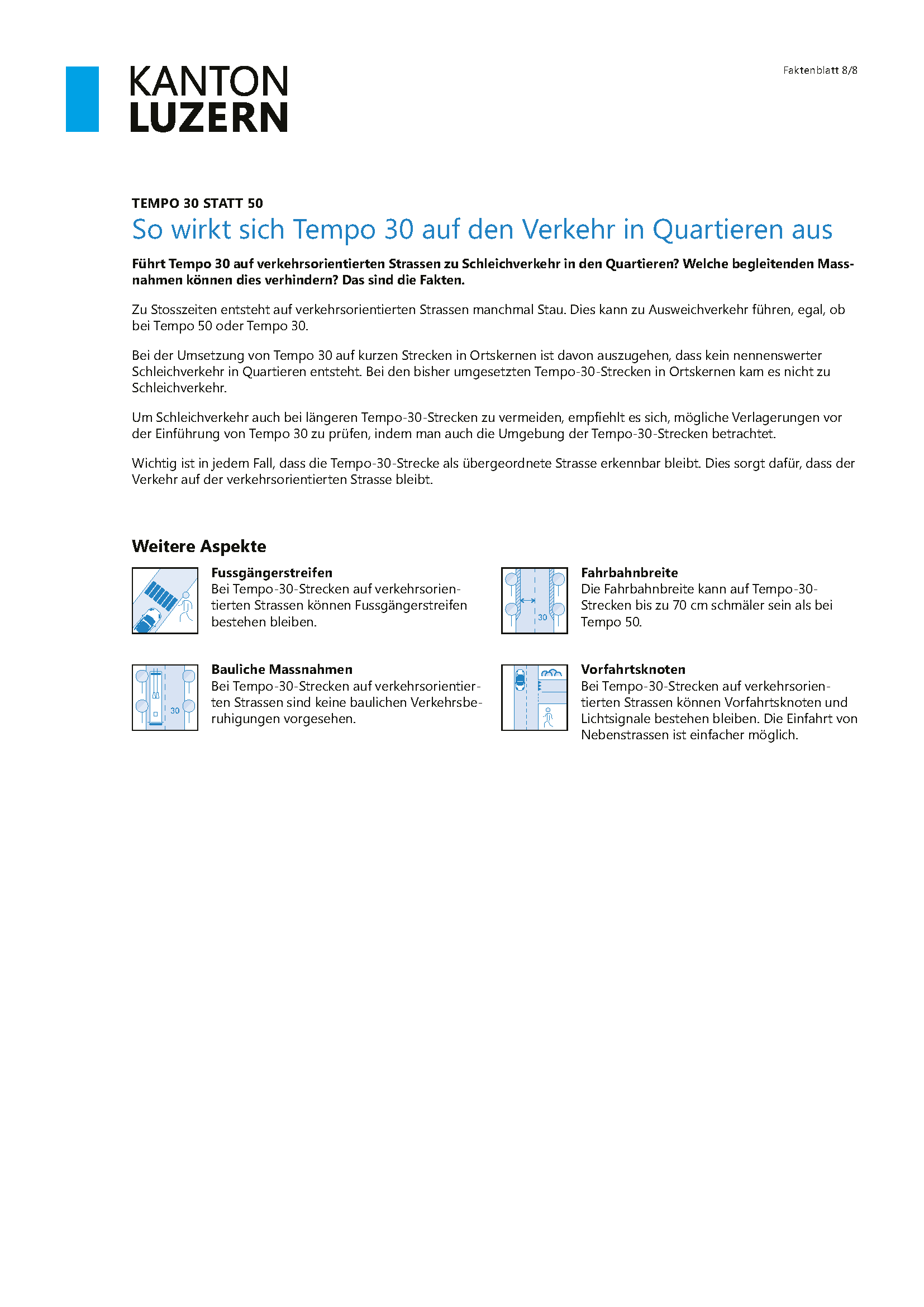 |
This is how speed 30 affects traffic in neighborhoodsDoes 30 km/h on traffic-oriented streets lead to slow-moving traffic in neighborhoods? What accompanying measures can prevent this? Traffic jams sometimes occur on busy roads during rush hour. This can lead to evasive traffic, whether at 50 km/h or 30 km/h. Neighborhood traffic fact sheet
|
See the Canton of Lucerne web page at

Showing 1 reaction
Sign in with
Facebook Twitter